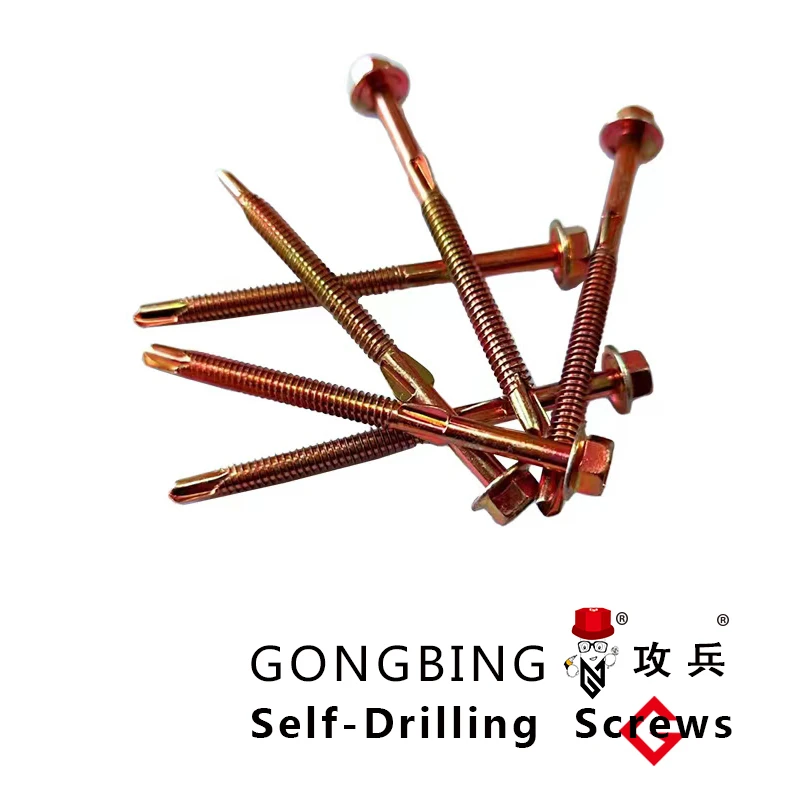chipboard screw factory
The Rise of Chipboard Screw Factories A Critical Component in Modern Construction
In the world of manufacturing and construction, few components play as crucial a role as screws. Among these, chipboard screws have gained significant popularity and application in recent years. As the demand for quality and efficiency in construction continues to soar, chipboard screw factories are increasingly becoming pivotal in the supply chain. This article explores the significance of chipboard screws, the workings of factories that produce them, and the challenges they face in today’s market.
Understanding Chipboard Screws
Chipboard screws are specially designed fasteners that cater to the unique properties of chipboard and other engineered wood products. These screws feature a distinctive thread design that allows for superior grip and holding power in materials that tend to be softer and less dense than solid wood. Typically made from steel or other durable metals, chipboard screws are corrosion-resistant and often treated with coatings to enhance their longevity.
Key applications for chipboard screws include furniture assembly, cabinetry, flooring, and various DIY projects. Their ease of use, coupled with their effectiveness in securing materials together, has made them a staple in carpentry and construction. As consumers increasingly seek out sustainable building solutions, chipboard products have gained traction due to their eco-friendly nature, leading to a heightened demand for the screws that hold them together.
Chipboard Screw Manufacturing Process
The production of chipboard screws typically begins with the selection of high-quality raw materials. Factories procure steel or other metals and begin the manufacturing process through several stages wire drawing, threading, heat treatment, and finishing.
1. Wire Drawing The process starts with large coils of metal wire. The wire is drawn through a series of dies to achieve the desired diameter, which is critical for the tensile strength of the screws.
2. Thread Rolling Once the wire is prepared, the next step involves rolling threads onto the blanks. This process not only creates the necessary helical threads but also strengthens the material through cold working.
3. Heat Treatment After threading, screws often undergo heat treatment to enhance their hardness and improve resistance to breakage. This step is crucial for ensuring that the screws can endure the stresses and strains of use in various applications.
chipboard screw factory

4. Finishing Finally, screws are coated to provide corrosion resistance. Common coatings include zinc plating and black oxide finishes, which help to prolong the life of the products, especially in environments with high humidity or exposure to chemicals.
5. Quality Control Throughout the manufacturing process, rigorous quality control measures are implemented to ensure that the screws meet industry standards. This includes tensile testing, dimensional checks, and coating thickness assessments.
The Economic Impact of Chipboard Screw Factories
Chipboard screw factories significantly contribute to local economies by creating jobs and supporting related industries. They are often at the forefront of innovations in manufacturing techniques and materials science, striving to improve efficiency and sustainability. As the construction industry grows, these factories often find themselves in competition with one another, emphasizing the need for innovation and quality assurance.
Additionally, chipboard screw factories play a part in the larger narrative of sustainable building practices. As the construction industry shifts toward more eco-conscious methods, manufacturers are continually exploring ways to minimize waste, utilize recycled materials, and reduce energy consumption in production processes.
Challenges Facing Chipboard Screw Factories
Despite their importance, chipboard screw factories face numerous challenges. One of the primary issues is the fluctuation of raw material prices, which can substantially impact production costs. Additionally, enhanced competition from international manufacturers can make it difficult for local factories to maintain their market share.
Moreover, as the industry evolves, factories must adapt to changing consumer preferences for more environmentally friendly products. This includes investing in research and development to produce screws that align with sustainable practices without compromising quality.
In conclusion, chipboard screw factories are vital to the construction industry, providing essential components that facilitate the assembly of furniture and structures. As demand continues to grow, these factories must navigate market fluctuations, innovate in manufacturing techniques, and adhere to sustainability goals, all while maintaining high-quality standards. Through these efforts, they will continue to play a crucial role in shaping the future of construction.
-
Weatherproof Plastic Expansion Anchors for OutdoorNewsJun.06,2025
-
Sustainability in the Supply Chain: Eco-Friendly TEK Screws ProductionNewsJun.06,2025
-
Load-Bearing Capacity of External Insulation FixingsNewsJun.06,2025
-
Double Head Bolts: Enhancing Efficiency in Industrial MachineryNewsJun.06,2025
-
Corrosion Resistance in Chipboard Screws: Coatings for Wholesale DurabilityNewsJun.06,2025
-
Butterfly Toggle Bolts : Enhancing Structural ResilienceNewsJun.06,2025
